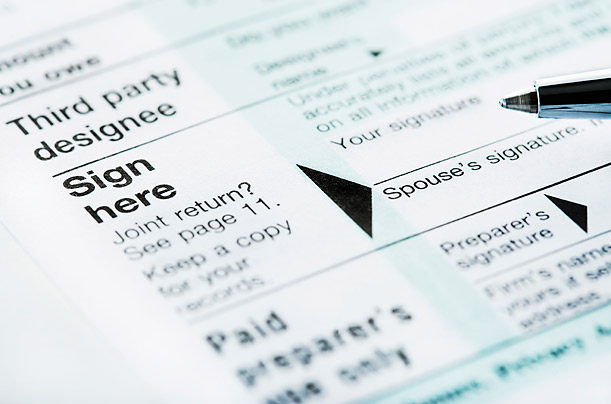
“Tax” has become a four-letter word in political discourse, but whether you think companies should pay less or rich people should pay more, there’s one thing most Americans can agree on: They’d be happy if their annual tax bill dropped.
The funny thing is, more than two-thirds of us actually prefer to pay more than we owe by maximizing our withholdings. Sounds crazy, but a new survey from MoneyRates.com finds that 68% of taxpayers prefer to have more taken out of their paychecks so they get a refund when tax time rolls around.
We’re talking a decent chunk of change here: The average refund for the 2012 tax year was $2,803, according to the IRS. The agency processed around 148 million individual tax returns last year and issued around 110 million refunds, so that means that most of us basically gave Uncle Sam nearly $310 billion as an interest-free loan.
You could be doing something better with that money on your own.
Of course, the contradiction makes sense if you view your refund as a kind of forced savings plan. MoneyRates.com found that nearly half of the people who minimize their withholdings spend the extra money in their paychecks rather than socking it away, while less than a third of people who get a refund spend it.
But this doesn’t mean you’re stuck either with the temptation to spend that money or wait all year for it. Work backwards through the math and figure out how much extra would be taken out of each paycheck if you ramped up your withholdings. Richard Barrington, senior financial analyst at MoneyRates.com, says that people who would otherwise get the average refund if they maximized their withholdings would wind up with about $54 more a week in their paychecks if they changed their withholdings to minimize the amount of taxes taken out.
Instead of letting the IRS hang onto that money, have it routed into a dedicated high-yield savings account. “High-yield” is a relative term these days; even these accounts tend to have interest rates a little below 1 percent, which would net you just over 12 bucks in interest over the course of the year.
Admittedly, that’s not much worth getting excited about, but there are still a couple of points in favor of this approach: If your refund is generally much higher than the national average, you’ll be able to save more, and you’ll earn (a little) more in interest. And if you treat this extra money as an emergency fund, you’ll be able to tap it without having to incur expensive credit card debt.
“ The key is having the discipline to do this,” Barrington says. “Automation can help with that. If you want to save money, have your paycheck directly deposited into savings rather than checking,” he suggests. “If you want to pay down debt, set up automated payments and increase those payments by the extra amount in your paycheck you’ll get by minimizing withholding.”
Further on that last point: If you already have credit card debt, you’ll make out much better if you opt to minimize withholdings.
The average variable APR on credit cards today is 15.38%. The average debt load is $7,123 for all households — and when you look just at households with credit card debt, the amount of that debt roughly doubles to 15 grand and change.
If you do the math using all averages — remember, if you normally get a bigger refund or have more debt, the effect will be magnified — applying the tax savings throughout the year saves you just over $192 in interest, Barrington says.
“Given the large spread between credit card rates and savings account rates these days, paying down debt is probably the best use you can make of your tax savings,” he says, and putting that money directly towards your debt will take away the temptation to spend it.
Suddenly, hanging onto that extra $2,800 looks like a much better deal.
More Must-Reads from TIME
- Cybersecurity Experts Are Sounding the Alarm on DOGE
- Meet the 2025 Women of the Year
- The Harsh Truth About Disability Inclusion
- Why Do More Young Adults Have Cancer?
- Colman Domingo Leads With Radical Love
- How to Get Better at Doing Things Alone
- Michelle Zauner Stares Down the Darkness
Contact us at letters@time.com